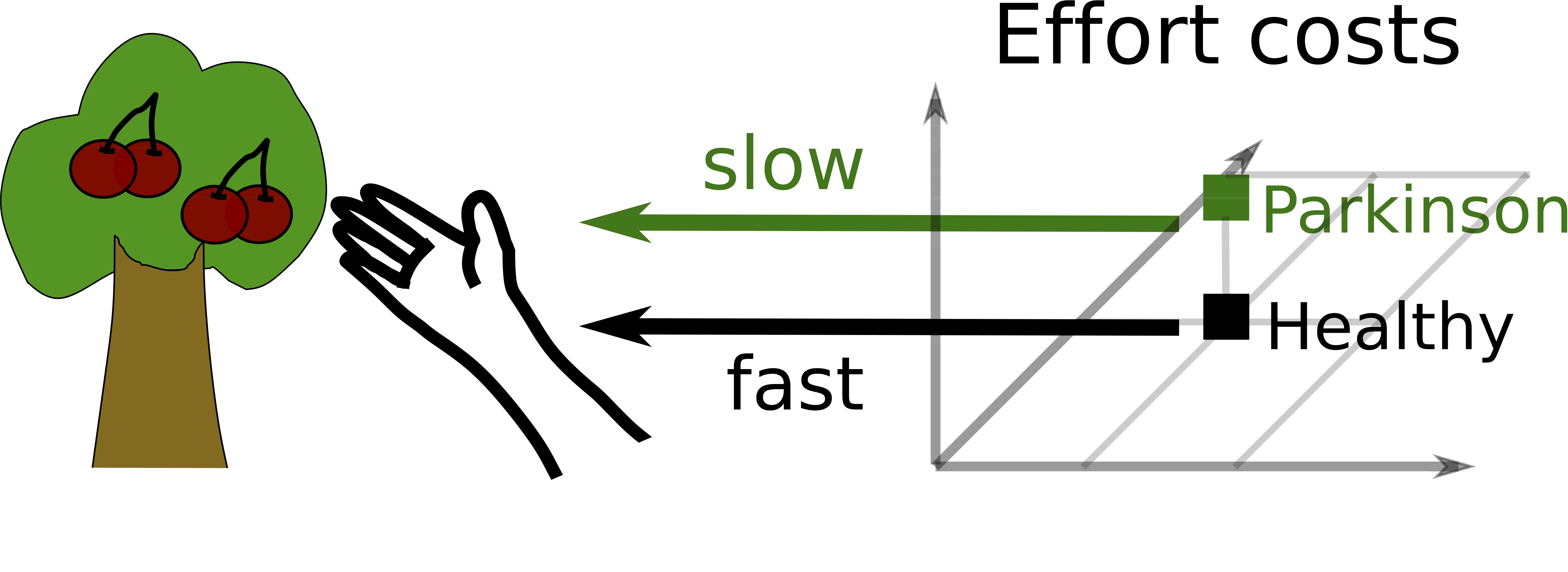Moving, fast and slow: behavioural insights into bradykinesia in Parkinson's disease.
In this review article, we discuss why people with Parkinson’s move slowly, using concepts about behaviour related to the optimal control of movements. We conclude that this approach can provide valuable insights into motor impairment in Parkinson’s when considering the complex nature of effort.
The debilitating symptoms of Parkinson's disease, including the hallmark slowness of movement, termed bradykinesia, were described more than 100 years ago. Despite significant advances in elucidating the genetic, molecular and neurobiological changes in Parkinson's disease, it remains conceptually unclear exactly why patients with Parkinson's disease move slowly. To address this, we summarize behavioural observations of movement slowness in Parkinson's disease and discuss these findings in a behavioural framework of optimal control. In this framework, agents optimize the time it takes to gather and harvest rewards by adapting their movement vigour according to the reward that is at stake and the effort that needs to be expended. Thus, slow movements can be favourable when the reward is deemed unappealing or the movement very costly. While reduced reward sensitivity, which makes patients less inclined to work for reward, has been reported in Parkinson's disease, this appears to be related mainly to motivational deficits (apathy) rather than bradykinesia. Increased effort sensitivity has been proposed to underlie movement slowness in Parkinson's disease. However, careful behavioural observations of bradykinesia are inconsistent with abnormal computations of effort costs due to accuracy constraints or movement energetic expenditure. These inconsistencies can be resolved when considering that a general disability to switch between stable and dynamic movement states can contribute to an abnormal composite effort cost related to movement in Parkinson's disease. This can account for paradoxical observations such as the abnormally slow relaxation of isometric contractions or difficulties in halting a movement in Parkinson's disease, both of which increase movement energy expenditure. A sound understanding of the abnormal behavioural computations mediating motor impairment in Parkinson's disease will be vital for linking them to their underlying neural dynamics in distributed brain networks and for grounding future experimental studies in well-defined behavioural frameworks.

2023. Brain, 146(9):3576-3586.
2020. J. Neurosci., 40(7):1571-1580.